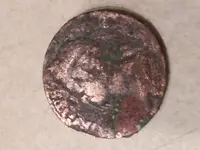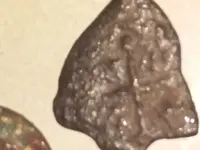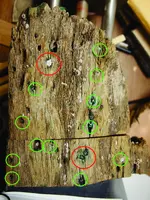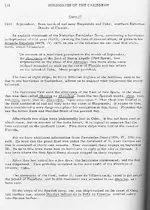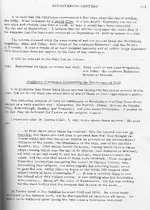Actually they put copper and lead sheathing over a burlap cloth that is soaked with tar. The cloth is put on the tar, which is spread on the wood hull. Then they nail it in place. That is why you find the cloth pattern on one side. Amazing that people put out a story and don't know what they are talking about. That is the new way to do it.
Not to dispute this very logical method Steve, but the pdf on the Margarita linked above says that no fabric remnants were found, event small bits jammed between planks that might have been expected were not evident. As the lead sheets are laid on like shingles so only part of the plate would be pressed against cloth, yet the pattern covered the entire plate on one side. Additionally, some spare plates found with the cargo stowed inside the vessel which were stacked and folded in half (and presumably never used) had the cloth pattern on one side. The laying of a paper barrier between copper plates and the hull was specifically mentioned as if it was an innovation intended to prevent corrosion, not a common practice.
Here is some text from Peter Earles book on the Concepcion:
"The preparation of the Concepcion was carried out during the winter of
1639-40 under the supervision of her mate, Francisco Granillo. The ship
had only recently returned from her last voyage to New Spain and had
in fact still been at sea when the contract was signed. She therefore
needed a complete overhaul and refitting. She was hauled down and her
bottom cleaned and, where necessary, re-sheathed with lead, to try to
protect her from the ravages of the shipworm which throve in the tropical
waters of the West Indies. All her planking and decking was scraped
down and re-caulked. Altogether 50 quintals of tar, 18 of black oakum, 12
of hemp, 16 of lead and two barrels of grease were used in an effort to
make the twenty-year-old ship sufficiently watertight to cover the four
thousand miles of sea that lay between Cadiz and Vera Cruz." [page 19]
I believe the hemp referred to should be rope.



